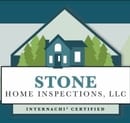Home inspections play a crucial role in the home buying process, providing potential buyers with an objective assessment of a property’s condition. However, not all issues may be immediately apparent, and it is important for buyers to be aware of potential red flags that could indicate significant problems. This article aims to highlight some common red flags that buyers should be attentive to during a home inspection.
One key area to focus on during a home inspection is structural issues. These can range from foundation problems to issues with load-bearing walls or uneven floors. Electrical problems should also be carefully evaluated, as outdated or faulty wiring can pose serious safety hazards. Plumbing concerns, such as leaks or plumbing system defects, should not be overlooked, as they can lead to costly repairs in the future.
Additionally, roofing and exterior defects should be thoroughly examined, as they can impact a home’s overall integrity and protection from the elements. Finally, pest infestation is another red flag that should not be ignored, as it can lead to extensive damage and potential health hazards.
By being aware of these red flags and conducting a thorough home inspection, buyers can make informed decisions and potentially avoid costly issues down the line.
Structural Issues
Structural issues in a home are a cause for concern and should be thoroughly inspected to ensure the integrity of the property. Foundation problems and structural damage can significantly impact the stability and safety of a house. Therefore, it is crucial for homebuyers to be aware of red flags associated with these issues.
One common red flag is the presence of cracks in the foundation. These cracks can indicate underlying structural problems, such as settlement issues or water damage. Horizontal cracks, especially those wider than a quarter inch, may indicate a more severe problem and should be inspected by a professional. Similarly, vertical cracks that are wider at the top can suggest a potential foundation settlement.
Sagging or uneven floors are another sign of structural issues. This can be caused by foundation settlement or deteriorating support beams. Homebuyers should be wary of any noticeable dips or slopes in the floors, as they may indicate a need for costly repairs.
Additionally, doors and windows that do not close properly or have visible gaps can be indicative of structural problems. Such issues may result from a shifting foundation or damaged load-bearing walls.
Overall, it is crucial for homebuyers to be vigilant about potential structural issues when conducting a home inspection. Hiring a professional inspector with experience in identifying and evaluating such problems is highly recommended. By addressing these red flags early on, homebuyers can make informed decisions and ensure the long-term stability and safety of their investment.
Moving on to the subsequent section on electrical problems, it is important to consider potential hazards associated with outdated or faulty electrical systems.
Electrical Problems
Electrical problems can be a significant concern when inspecting a home. Outdated wiring or electrical panels are red flags that may indicate potential safety hazards or the need for costly repairs. Faulty outlets or switches, as well as flickering lights or frequent circuit breaker trips, can also be signs of underlying electrical issues that should be evaluated by a professional.
Outdated wiring or electrical panels
One concerning aspect to consider during a home inspection pertains to the presence of outdated wiring or electrical panels. Outdated electrical systems can pose potential fire hazards and safety risks. Homes with outdated wiring may have knob-and-tube or aluminum wiring, both of which are considered outdated and may not meet modern electrical standards. These types of wiring can be prone to overheating and may not be able to handle the electrical demands of modern appliances and technology. Similarly, outdated electrical panels may lack the capacity to handle the electrical load required by a home, potentially leading to electrical failures or even fires. Therefore, it is crucial for home buyers to ensure that the wiring and electrical panels in the property they are considering are up to date and meet current safety standards. This will help minimize the risk of electrical issues and ensure the safety of the occupants. Moving on to the subsequent section about faulty outlets or switches…
Faulty outlets or switches
Faulty outlets or switches can present safety concerns and potential hazards within a property, as they may lead to electrical shocks, short circuits, or even electrical fires. It is important to assess the condition of outlets and switches during a home inspection to ensure their proper functioning. While some faulty outlets or switches may be an easy fix, others may indicate deeper electrical issues that require professional attention. Common causes of faulty outlets and switches include loose or damaged wiring, outdated components, and overloading of circuits. Additionally, faulty outlets or switches can be a sign of improper installation or wear and tear over time. Addressing these issues promptly is crucial to maintain a safe and functional electrical system within the home. Moving on to the next section, flickering lights or frequent circuit breaker trips also warrant attention.
Flickering lights or frequent circuit breaker trips
Flickering lights or frequent circuit breaker trips can create a sense of unease and frustration due to the unpredictable nature of these electrical issues. Flickering lights, characterized by a sudden and temporary dimming or brightening, are often a sign of a larger problem within the electrical system. This issue can be caused by loose wiring connections, faulty light bulbs, or overloaded circuits. On the other hand, frequent circuit breaker trips occur when the electrical load exceeds the capacity of the circuit. This can be caused by appliances drawing excessive power or faulty wiring. Both of these problems should not be overlooked during a home inspection, as they can indicate potential safety hazards or the need for costly repairs. Moving forward to the subsequent section about plumbing concerns, it is essential to address these electrical issues before proceeding with the evaluation of the property’s water systems.
Plumbing Concerns
Plumbing concerns can be a cause for great concern and frustration for potential home buyers, as they can lead to costly repairs and disruptions in daily life. It is essential for buyers to be aware of common plumbing issues and signs of water damage during a home inspection to avoid any unpleasant surprises in the future.
One of the most common plumbing issues often encountered is leaky pipes. These can cause water damage to the walls, floors, and ceilings. During a home inspection, buyers should look for any visible signs of water stains, discoloration, or peeling paint, as these may indicate a leak. Additionally, water pressure problems should not be overlooked, as they can be indicative of underlying plumbing issues such as clogged pipes or corroded fittings.
Another concern to watch out for is outdated or faulty plumbing systems. Older homes may have galvanized pipes that are prone to rust and corrosion, leading to leaks or restricted water flow. Buyers should also check for any signs of plumbing fixtures that are not functioning properly, such as faucets that drip or toilets that constantly run.
Furthermore, it is crucial to inspect the sewer lines and drainage system. Blockages or tree root invasions can cause backups and sewage leaks, resulting in significant damage and health hazards. Buyers should inquire about the condition of the sewer lines and request a sewer scope inspection if necessary.
In conclusion, potential home buyers should be vigilant when it comes to plumbing concerns during a home inspection. Being aware of common plumbing issues and signs of water damage can help buyers make informed decisions and avoid costly repairs in the future. With plumbing concerns addressed, it is important to transition to the subsequent section about ‘roofing and exterior defects,’ which are equally significant aspects to consider when evaluating a potential home.
Roofing and Exterior Defects
When inspecting a property, it is crucial to pay close attention to the roofing and exterior defects, as these can lead to potential issues in the future. Missing or damaged shingles or tiles can result in leaks and water damage, while cracked or deteriorating siding can compromise the structural integrity of the house. Additionally, issues with gutters or downspouts can cause water to pool around the foundation, leading to potential foundation problems. It is important to thoroughly assess these key points to ensure the overall condition of the property.
Missing or damaged shingles or tiles
Roof damage, such as missing shingles or damaged tiles, is a significant red flag that home buyers should be aware of during a home inspection. Missing shingles expose the underlying roof structure to potential water damage, increasing the risk of leaks and structural issues. Damaged tiles, on the other hand, can compromise the integrity of the roof, allowing water to seep through and potentially causing extensive damage to the interior of the home. These issues may not only be costly to repair but also indicate poor maintenance and neglect by the previous homeowner. Therefore, it is crucial for buyers to carefully inspect the roof for any missing or damaged shingles or tiles as it can be an indication of potential future problems. Moving on to the next section, cracked or deteriorating siding is another important aspect to consider during a home inspection.
Cracked or deteriorating siding
Cracked or deteriorating siding can be a visual indication of potential issues with the exterior of a property, as it suggests a lack of proper maintenance and can compromise the overall integrity and aesthetics of the home. When the siding becomes cracked, it not only allows moisture to penetrate the walls but also exposes the building to pests and insects. Cracked siding repair is essential to prevent further damage and maintain the structural integrity of the property. Signs of water damage on siding, such as mold or discoloration, can also indicate more serious problems, such as leaks or improper drainage. It is crucial for buyers to be aware of these red flags and consider the cost and effort required to address these issues. Moving forward, issues with gutters or downspouts should also be examined to ensure proper water management and prevent potential water damage.
Issues with gutters or downspouts
Issues with gutters or downspouts can lead to water damage and compromise the structural integrity of a property, causing potential financial burdens and emotional distress for homeowners. Proper gutter maintenance is essential to prevent issues such as clogs, leaks, and overflowing. Neglecting gutter cleaning can result in water overflowing onto the siding, foundation, or even into the basement, leading to costly repairs. Additionally, downspout installation is crucial to ensure the proper drainage of rainwater away from the property. Improperly installed or damaged downspouts can cause water to pool near the foundation, increasing the risk of cracks and water infiltration. Regular inspections and repairs of gutters and downspouts are necessary to maintain their functionality and protect the property from water damage. In the subsequent section about ‘pest infestation,’ it is important to address how water accumulation from gutter issues can attract pests.
Pest Infestation
Pest infestation is a significant concern for home buyers as it can lead to substantial damage and costly repairs. Evidence of termites or other pests, such as droppings or nests in attics or crawl spaces, often indicate an ongoing infestation. Additionally, visible damage to wood structures or furniture may be a sign of long-term pest activity. It is crucial for buyers to thoroughly inspect a property for these red flags to avoid potential headaches and expenses in the future.
Evidence of termites or other pests
Evidence of termites or other pests can be a cause for concern during a home inspection, as it may indicate potential structural damage or the need for costly repairs. Termites are known for their ability to silently destroy wooden structures, and if left untreated, they can compromise the integrity of a home. Therefore, it is crucial for buyers to be aware of the signs of termite damage. These signs may include hollow-sounding wood, mud tubes on exterior walls, discarded wings near windows or doors, or visible tunnels in wooden beams. Additionally, termite prevention methods such as regular inspections, maintaining proper ventilation, and clearing debris around the foundation can help mitigate the risk of infestation. It is important for buyers to thoroughly inspect for evidence of termites or pests, as it may affect the overall condition and value of the property. Transitioning into the subsequent section about ‘droppings or nests in attics or crawl spaces,’ it is essential to thoroughly examine these areas to ensure there are no further signs of infestation.
Droppings or nests in attics or crawl spaces
When conducting a home inspection, it is crucial to thoroughly examine attics and crawl spaces for any signs of pests. One of the telltale signs of a pest infestation is the presence of droppings or nests in these areas. Droppings can provide valuable clues about the type of pest that may be present, such as mice, rats, or bats. Additionally, nests can indicate that pests have made a home in the property, and their removal can be a challenging and costly process. Detecting droppings or nests early on can help buyers make informed decisions about the property and take appropriate measures for pest prevention. Therefore, it is imperative for home inspectors to meticulously inspect these areas, ensuring that no signs of infestation are overlooked. Moving forward, it is essential to explore another potential red flag during a home inspection: damage to wood structures or furniture.
Damage to wood structures or furniture
Wood structures or furniture that show signs of damage during a home inspection can indicate potential issues with pests or structural integrity. One common issue to look out for is wood rot, which is caused by fungi that break down the cellulose in wood, leading to decay. Signs of wood rot include soft, spongy wood, discoloration, and a musty odor. If left untreated, wood rot can compromise the strength and stability of the structure. Insect damage is another red flag to watch for. Termites, carpenter ants, and wood-boring beetles can cause significant damage to wood structures and furniture. Look for small holes, sawdust-like material (frass), or hollow-sounding wood, as these are indications of insect infestation. It is important to address any wood damage promptly to prevent further deterioration and potential safety hazards.
Conclusion
In conclusion, it is crucial for every buyer to be aware of the red flags that may arise during a home inspection. Structural issues such as foundation problems or sagging floors can be indicative of significant repair costs. Electrical problems, such as outdated wiring or faulty circuit breakers, can pose safety hazards. Plumbing concerns, such as leaky pipes or inadequate water pressure, may lead to extensive repairs. Roofing and exterior defects can result in water damage and costly repairs. Lastly, pest infestations can cause damage to the property and pose health risks. Being knowledgeable about these red flags can help buyers make informed decisions and avoid potential problems in the future.





